The LG G5 is a television that not only continues but also expands on what we loved about previous models in the G series. Instead of taking the beaten path, LG opted for a new Tandem OLED panel – and it was a stroke of genius. Picture brightness? Simply, F E N O M E N A L. HDR effect? Close to reference. Colors after calibration? Nearly perfect. Motion smoothness, low latency, and gaming features? At an absolutely top level. The G5 performs well in movies and games, day and night, whether with a decoder, console, PC, or just the remote. Of course – this is not a product without flaws. It's a pity that DTS support is lacking, the viewing angles have worsened compared to its predecessor, and the remote may vary depending on the version. But when we look at the overall picture, it's hard not to feel that this is one of the best OLED televisions available on the market, and perhaps even the best. Definitely, when it comes to its versatility and picture quality without having to reach for extremely expensive models from competitors. If you're looking for a television for everything – for cinema, gaming, a bright living room, streaming content, or connecting a computer – the LG G5 is a device that simply delivers on every front without compromise.
- Matching (Score)
- Our verdict
- TV appearance
- Where to buy
- Contrast and black detail
- HDR effect quality
- Factory color reproduction
- Color reproduction after calibration
- Smoothness of tonal transitions
- Image scaling and smoothness of tonal transitions
- Blur and motion smoothness
- Console compatibility and gaming features
- Input lag
- Compatibility with PC
- Viewing angles
- TV efficiency during daytime
- Details about the matrix
- TV features
- Apps
- Playing files from USB
- Sound
LG OLED G5 vs Hisense U7Q
Direct compare
Check the best price offer:
LG OLED G5G54 / G51 / G55 / LW / LS
U7Q / U78Q
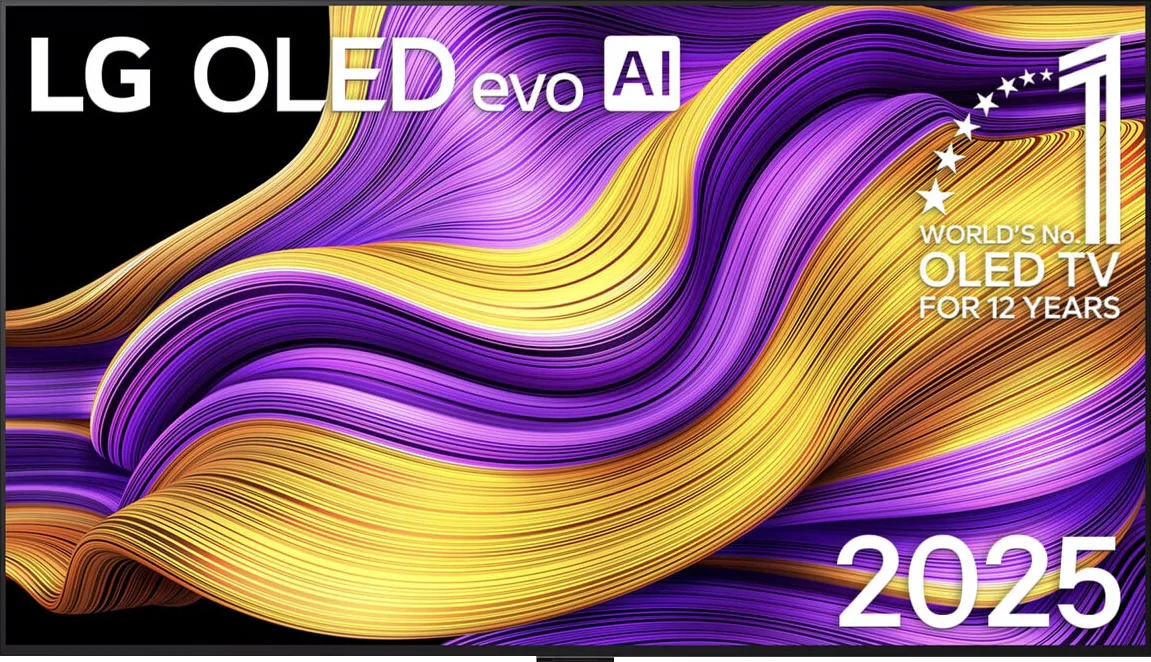

Panel type: WRGB OLED
Resolution: 3840x2160
System: WebOS
Model year: 2025
Complete the survey to find out the result

Panel type: LCD VA
Resolution: 3840x2160
System: VIDAA
Model year: 2025
Complete the survey to find out the result

Overall rating
8.9
7.2
Movies and series in UHD quality
9.2
6.7
Classic TV, YouTube
9.2
6.8
Sports broadcasts (TV and apps)
9.0
6.5
Gaming on console
9.6
8.0
TV as a computer monitor
8.8
8.6
Watching in bright light
8.0
6.2
Utility functions
8.5
8.9
Apps
9.1
7.7
Sound quality
8.7
7.2
Complete the survey to find out what fits your preferences
Advantages
Amazing black and contrast
Reference color reproduction after calibration
Very high brightness in HDR content
Outstanding cooperation with consoles and computers
Great motion fluidity - OLED panel 165Hz
Many features for gamers: VRR, ALLM, HGIG, low input lag
Excellent WebOS operating system with many applications
Superb handling thanks to the Magic remote with "cursor" function
Great contrast and deep black
Very good smoothness of tonal transitions (close to reference level)
High brightness
Supports 4K 144 Hz and even 240 Hz in Full HD
VRR, ALLM, G-SYNC – a full package for gamers
Low input lag
Pleasant sound with a light bass
Many classic TV functions built into the VIDAA system
Disadvantages
No support for DTS audio format
Worse (though still good) viewing angles than the predecessor G4
Different versions of the remote in derivative models – hard to predict which version we will get
Lack of support for HGiG (hinders HDR setup on consoles)
Brightness management issues
Poor viewing angles – typical for VA panels
Closed VIDAA system – missing some applications
Our verdict
The Hisense U7Q is one of the most interesting Mini-LED televisions in its price segment, clearly showing that Hisense is really starting to matter in the market not only because of the price-to-capabilities ratio but also due to its increasingly refined picture quality. Let’s start with what truly impresses: the contrast and black levels are at a level that was recently unattainable in this price range. Combined with smooth tonal transitions, solid brightness, and a fast 144 Hz panel, the U7Q becomes a television that excels in both movies and gaming. Gamers will find nearly everything they could expect here – variable refresh rate (VRR) support, auto low latency mode (ALLM), very low input lag, and even 240 Hz in Full HD. All of this means that the U7Q will perform well with both next-generation consoles and PCs. However, it is not without its weaknesses. With HDR content, one might want to say: "untapped potential" – you may ask why? The television’s algorithms dim small bright elements or overly boost them, which can spoil the viewing experience. There is also a lack of support for HGiG, which is a feature that would better synchronize the console with the television for HDR. In summary, briefly – the Hisense U7Q is a very versatile and complete television that has its imperfections but makes up for them in many key aspects. For gamers, for occasional movie watchers, for someone looking for good equipment for everyday use – it is one of the most cost-effective propositions in 2025. One just needs to know what compromises they are signing up for – and then it will be hard to be disappointed.
TV appearance
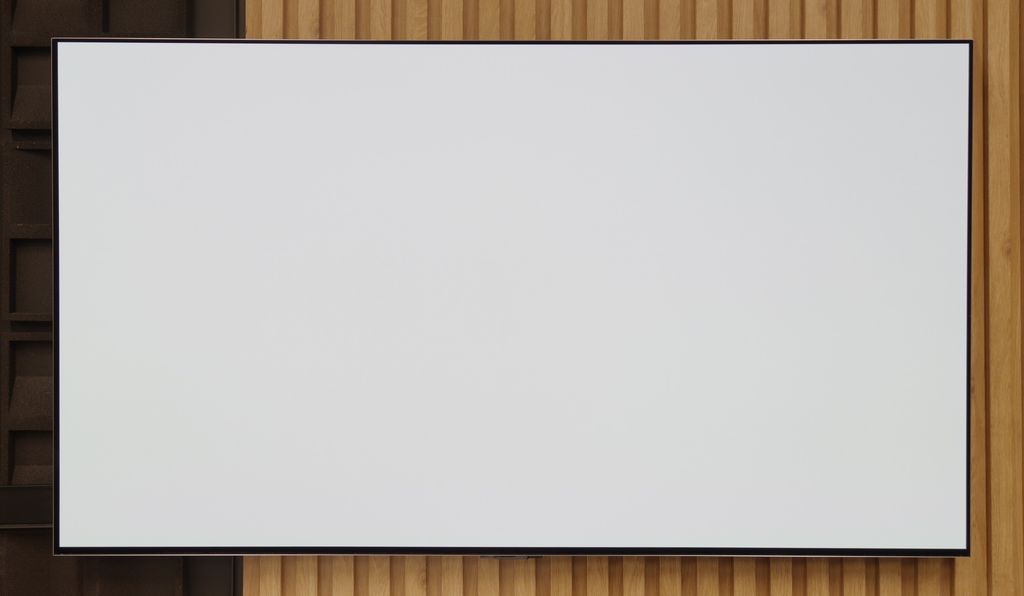
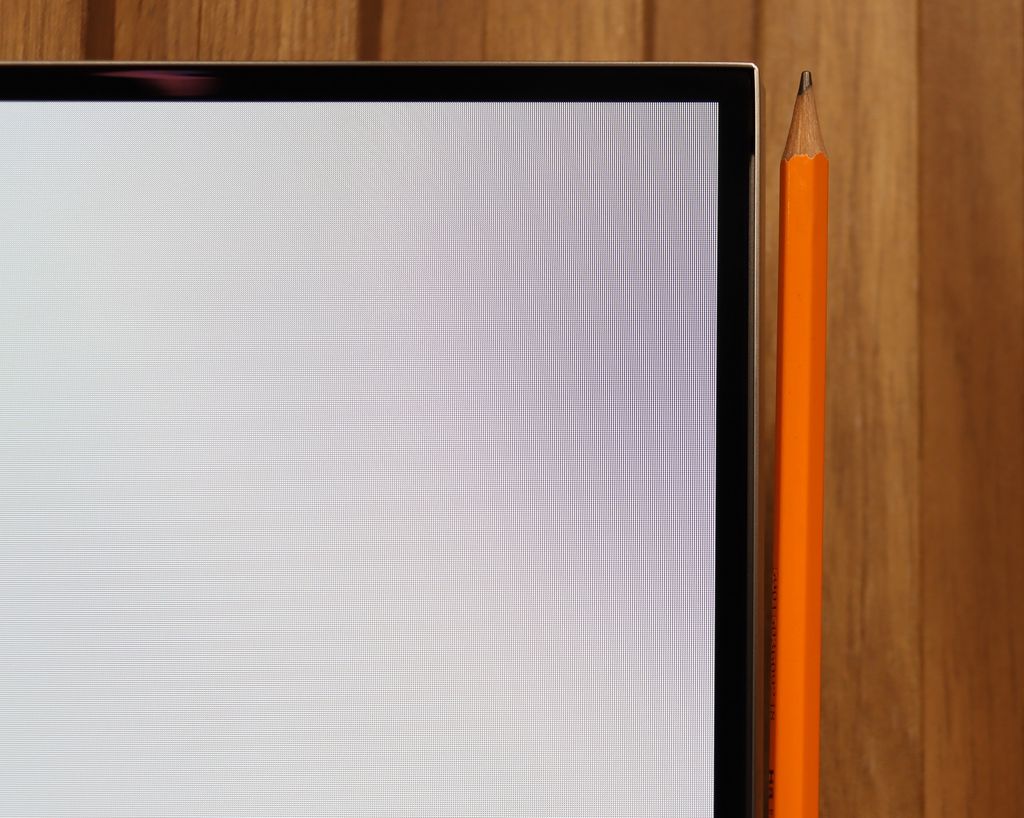
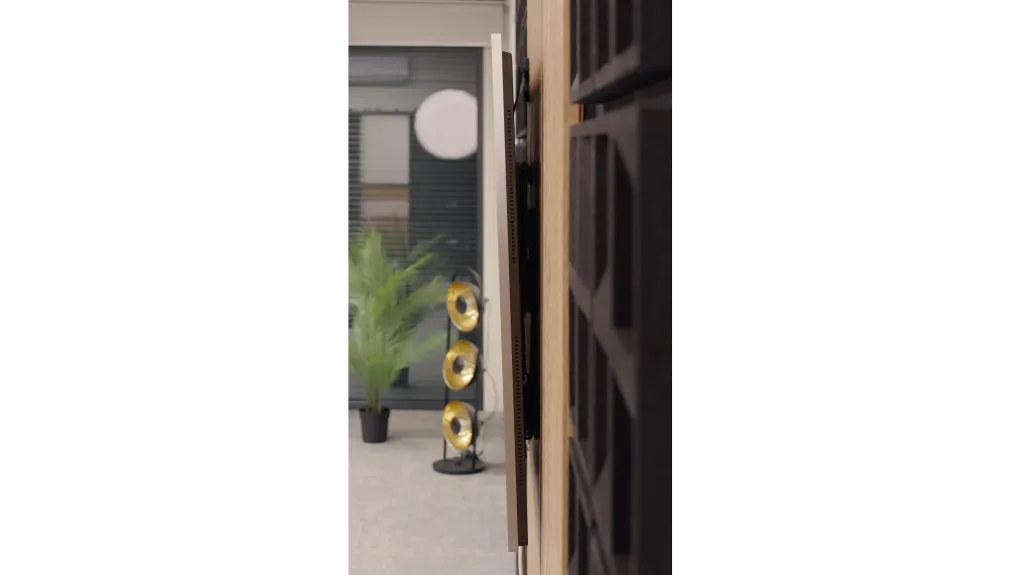




Contrast and black detail
10/10
7.5/10
Local dimming function: Yes, number of zones: 220 (10 x 22)
Contrast:

Result
∞:1

Result
∞:1

Result
∞:1

Result
∞:1

Result
∞:1

Result
278,000:1

Result
28,800:1

Result
11,100:1

Result
10,800:1

Result
6,250:1
Halo effect and black detail visibility:
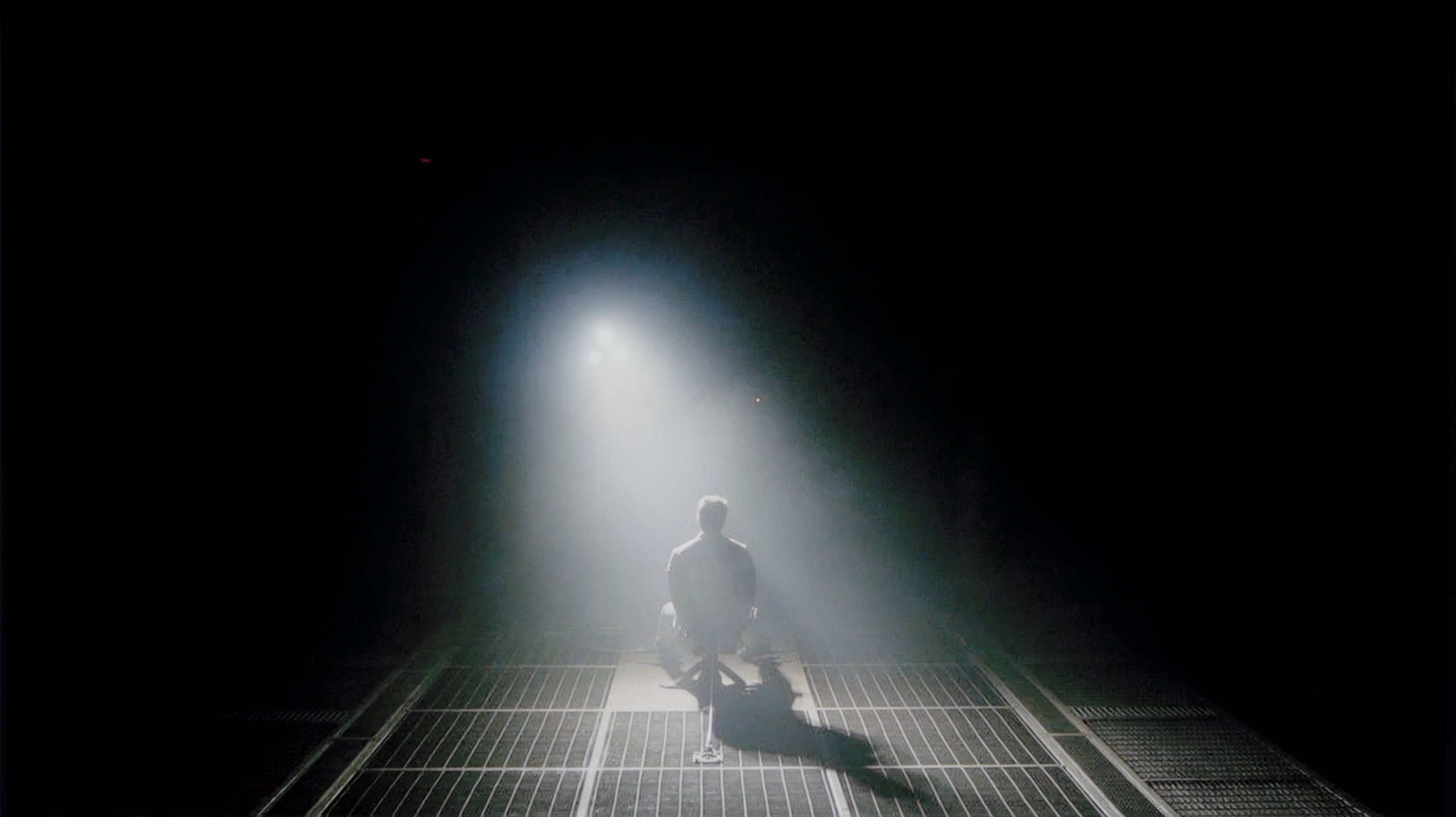

LG G5, as befitting an OLED television, impresses with its contrast and black quality. In scenes with a lot of dark areas, the screen looks almost perfect, offering deep, absolute black and infinite contrast – an effect that still cannot be achieved on any LCD television. The new Tandem OLED panel does not introduce any negative changes compared to previous generations – blacks are perfect regardless of the content. Watching scenes from movies like The Revenant or Oblivion, you can clearly see the excellent separation of lights, without any blooming effect or brightening of dark parts. In this category, the LG G5 deserves the highest rating.
The U7Q is a television with Mini-LED backlighting – just like the PRO version. The difference? The version without the suffix simply has fewer dimming zones. In our 65-inch model with a VA panel, we counted 220 of them. And although this doesn't make as much of an impression as in the U7Q PRO, it still looks very good on paper for this price range. Alright, but how does it perform in practice? Surprisingly well. The contrast in the U7Q can reach up to 300,000:1, which provides a really solid black effect. In many scenes, it's hard to find fault – the image has depth, and the highlights are well separated. Of course, Mini-LED is not OLED – so there are certain limitations. In very challenging scenes with a lot of dark details, the television sometimes either "eats" them, leaving a nice black, or slightly brightens the background, which can cause a halo effect. This is normal in this technology and must be taken into account. Despite these minor drawbacks – the contrast in the U7Q performs really well.
HDR effect quality
9.1/10
4.6/10
Luminance measurements in HDR:

Result
2346 nit

Result
2353 nit

Result
2399 nit

Result
2353 nit

Result
2012 nit

Result
521 nit

Result
160 nit

Result
351 nit

Result
98 nit

Result
674 nit
Scene from the movie “Pan” (about 2800 nits)


Scene from the movie “Billy Lynn” (about 1100 nits)


Static HDR10


Dynamic: Dolby Vision
Dynamic: Dolby Vision


HDR luminance chart:
Hisense U7Q
Luminancja HDR
Luminance of RGB colors
LG OLED G5
Luminancja HDR
Luminance of RGB colors
LG G5 with the new Tandem OLED panel brings the biggest change specifically in terms of the brightness of the television. And it’s quite impressive. This is truly an astronomically bright OLED. In every tested scene – whether it’s point lights or full-screen whites from the movie The Meg – the brightness on the G5 exceeded 2000 nits. Just a year ago, such values on an OLED were simply unimaginable. And here we are – the G5 comes close, and at times even surpasses the best Mini-LEDs on the market. A new feature of the Tandem OLED panel is the expanded color gamut coverage – and here the LG G5 performs almost perfectly. DCI-P3 achieves a full 100%, while BT.2020 maintains around 83%. These are some of the highest values currently available on the market – it’s hard to find any other television that comes close to such results, unless we are talking about the best displays with QD-OLED panels. The G5 has nearly reference-quality HDR – both in terms of brightness and color saturation. This is an OLED that can truly shine – and not just figuratively.
Since the algorithms responsible for blacks are performing quite well, we expected a similarly good effect when it comes to brightness and overall HDR quality. Unfortunately – here we have to disappoint you a bit.
The U7Q is quite a bright TV – in optimal conditions, it can reach around 800 nits, which indeed impresses on some screens, especially in scenes like those from the movie The Meg. Bright segments can really shine, and the HDR effect is noticeable. The problem arises when very small, bright elements appear on a dark background – for example, in Sicario 2 or in the second scene of the movie Life of Pi. In such moments, the dimming algorithms operate too aggressively. Yes, the blacks look great then, but the brightest points can almost completely fade, causing the HDR effect to disappear and details to be barely visible. That's just the nature of this technology in this price segment.
As a consolation, it's worth adding that the U7Q is advertised as a QLED TV (in practice, a PFS layer is used, which works very similarly), and it is indeed capable of displaying a wide color palette – with DCI-P3 coverage at around 94%, that's a very good result for this class.
Factory color reproduction
7.8/10
6.3/10


Factory Mode
After calibration


Factory Mode
After calibration
Our test unit LG G5 struggled with some issues in the factory Filmmaker mode. And while the image might have seemed fine to most people, we knew that this TV was capable of much more. This mode had a clear excess blue tint in the white balance, resulting in a strong cooling of the image – particularly in HDR modes, where there was also a lack of red. The picture seemed cold, and its sharpness was artificially boosted and unnatural. Another significant issue was the brightness characteristic. In SDR content, the situation wasn't the worst, aside from a slight dimming of the entire image. However, it performed much worse in HDR materials – due to improper brightness management, the smallest details could completely disappear from the image, and larger, bright elements appeared overexposed and lacking gradation. Luckily, the G5 supports calibration using 3D LUT (a tool for professionals to calibrate colors), so we decided to take advantage of its professional background and see what it was really capable of. Because while it wasn't terrible even before calibration, the potential of this TV definitely deserved more.
We tested the U7Q in the best possible picture mode, which is Filmmaker Mode. This mode is supposed to provide the most "filmic" experience and fidelity to the creators' intent – right out of the box. Unfortunately, even this professionally sounding name does not guarantee a perfect picture.
In our unit, the problem lay in a poorly set white balance. Both in HD and 4K content, the image had too much blue and red, giving the screen a slightly pinkish hue. It didn't look terrible, but it was noticeable – especially in bright scenes and white backgrounds. This alone could have been forgiven, but the biggest issue is the management of brightness in HDR content. The EOTF curve from the measurements confirms what we saw earlier during the scene tests: the television often dims the smallest bright elements too much, causing them to almost disappear, or conversely – excessively brightens the brightest ones, affecting the naturalness of the image.
Color reproduction after calibration
9.8/10
7.4/10




After completing the calibration process using professional tools, we can confidently state that the LG G5 offers nearly reference-quality image. Most of the errors related to white balance and the ColorChecker test are below the value of 2, which is a phenomenal result, practically imperceptible to the human eye. And while one could still criticize that in HDR films the television tends to slightly dim the smallest elements of the image, in practice, this does not negatively affect the overall impression. Hats off to LG, because once again they provide the user with enormous possibilities for adjusting their display – and this, combined with very good parameters of the panel itself, results in an image that is truly hard to surpass.
Thanks to specialized tools, we managed to correct the color quality in SDR content to nearly perfection. In materials with lower dynamics, delta E errors dropped below 0.5, which can be considered an almost reference result. The image on television, YouTube, or classic Full HD looks really good after calibration. Well, but where couldn’t we improve the image so easily? Primarily, it concerns HDR quality content. While we managed to somewhat "tame" the white balance and eliminate pink hues in most scenes, unfortunately, we did not have full control over brightness management. We set the local dimming settings according to the best observations – SDR: Medium, HDR: High – but the U7Q still did everything a bit its own way. There were still cases of overly strong dimming or brightening of details that the calibration simply couldn't eliminate. And although the overall reception of the content is much better, it must be taken into account that the U7Q will always have something to say at the end "but."
Smoothness of tonal transitions
8.5/10
9.9/10












The smoothness of tonal transitions in the LG G5 is a clear step forward compared to last year's model. Not only has the brightness improved, but also the way colors blend, which the G4 sometimes struggled with. In the vast majority of scenes, the G5 has no issues with tonal transitions – there is no typical banding associated with WOLED technology, nor ugly breaks between colors. Of course, in very dark areas of the image and with shades of gray, minor imperfections can still be noticed, but these are things that the average viewer wouldn't even register. In short – it's really good.
The U7Q performs exceptionally well when it comes to tonal transitions – we can confidently say that it reaches almost reference level, which is why in this category, the TV receives one of the highest possible ratings from us. The color blends are smooth, clean, and without visible bands. In most scenes, everything looks simply perfect, and any potential minor imperfections may only appear in very specific shots – although we hardly noticed them during testing.
Image scaling and smoothness of tonal transitions
8.7/10
6/10
Smooth transition function
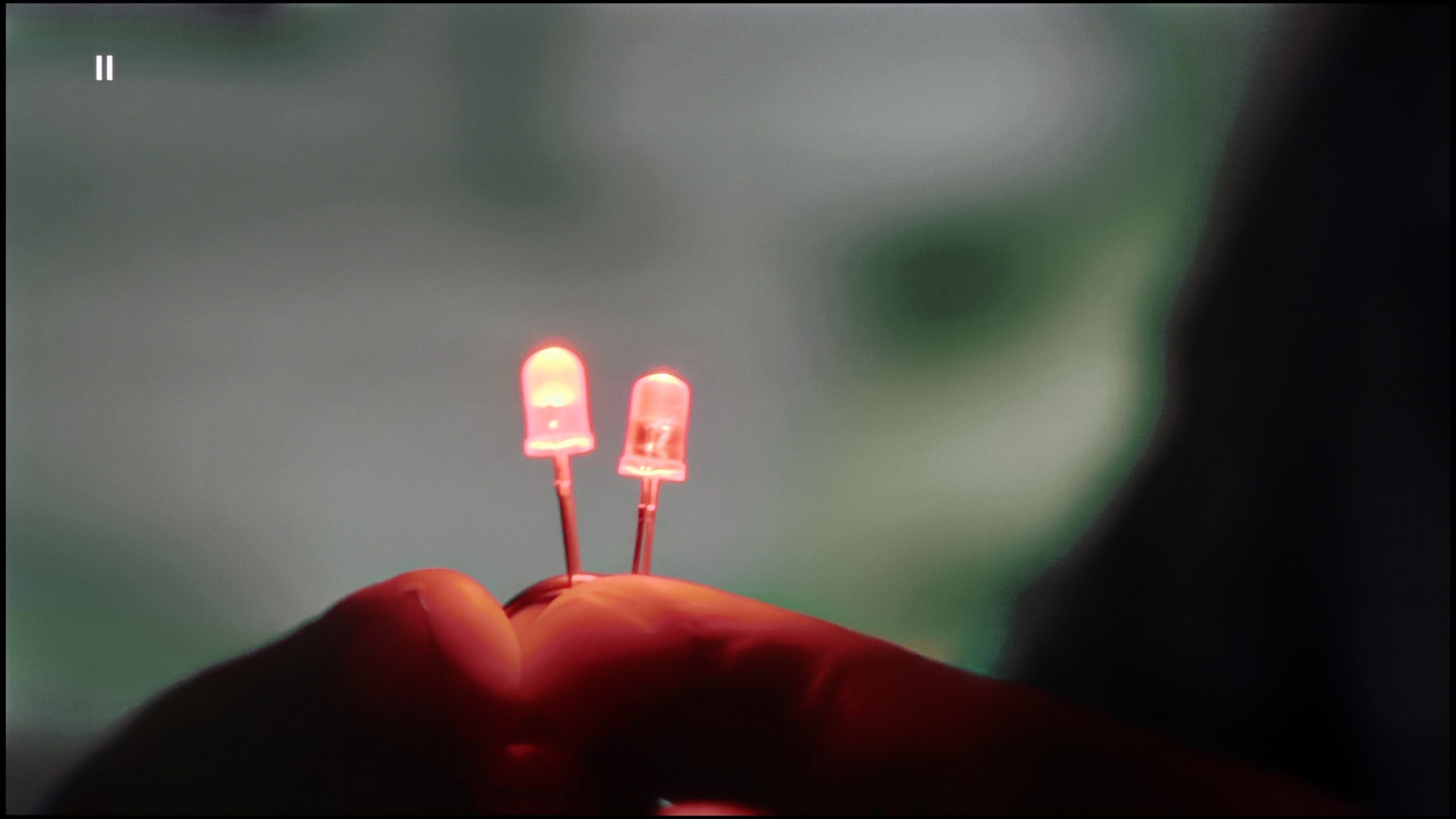

Image without overscan on the SD signal


Upscaling and digital image processing in the LG G5 perform very well. The television handles lower quality content exceptionally, especially when the "Smooth Gradation" feature is set to a low level. In this mode, it effectively removes unwanted artifacts and issues with visible tonal transitions. It may also slightly smooth out some desired details, such as the subtle texture of clothing or skin, but importantly – it does not remove film grain, so it’s hard to say there’s a serious compromise here. It’s one of those options that’s definitely worth enabling.
The G5 also does well with upscaling, which is improving the quality of older materials. The test image with the model looked really solid – slight edging was visible, but that’s an effect that can’t be completely avoided. Additionally, there were no issues with overscan, which – contrary to appearances – is not obvious, even in 2025.
There are situations where we would like to smooth out tonal transitions a bit, especially in older materials – those that have limited source quality. The U7Q is equipped with a feature called “Smooth and Gradient Image,” but unfortunately… it works very poorly. In the “Low” option, the effects are practically unnoticeable, and other settings smooth out details but do not improve tonal transitions. The only plus is that the feature does not interfere with film grain, so it does not ruin the natural structure of the image.
Fortunately, content scaling performs quite well. The image is not overly sharpened, there is no artificial clarity – and although it is known that this is not the level of high-end televisions, the U7Q handles displaying really old content in a completely acceptable manner without any problem.
Blur and motion smoothness
9/10
7.5/10
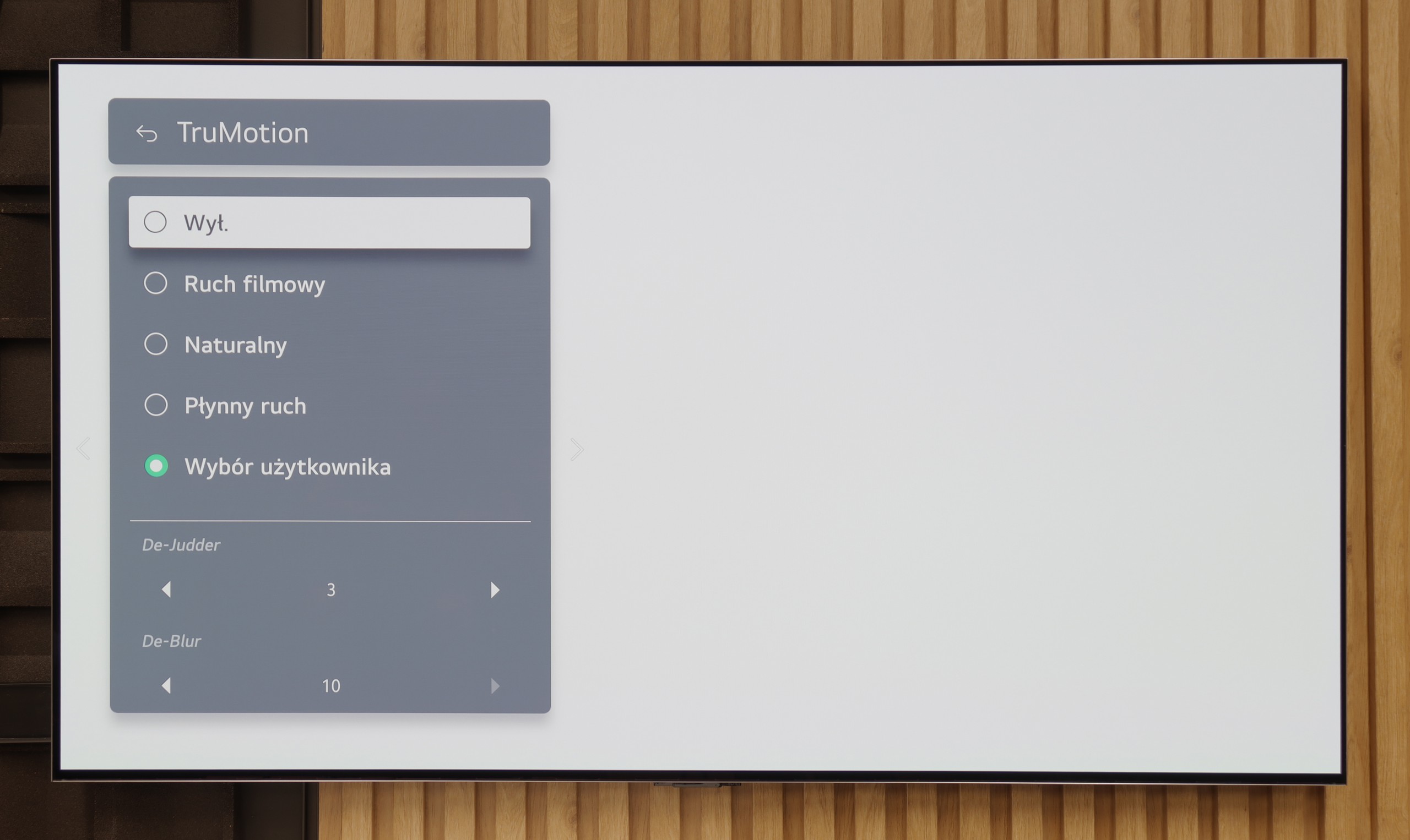

Blur (native resolution, maximum refresh rate):






Blur (BFI function enabled):
Image flickers in this mode






Smużenie (4K 165Hz):



Smużenie (1080p 240Hz):



The motion fluidity on the LG G5 is simply phenomenal. The TV is equipped with a 165 Hz refresh rate panel, and this combined with the instantaneous response time of the OLED matrix delivers incredible results. The picture doesn’t stutter or smear like on classic LCD TVs. Like most LG models, the G5 features a motion smoother, which can be useful when watching movies – of course, we're talking about the TruMotion mode. With the “De-Blur” and “De-Judder” sliders, we can adjust the smoothness of older material according to our preferences, whether we want to preserve the characteristic film stutter or move towards a more fluid, television-like effect.
U7Q is truly a fast television, similar to its more powerful version "PRO". At a resolution of 4K, it supports up to 144 Hz refresh rate, and if someone wants even more – in Full HD you can achieve up to 240 Hz! This will mainly benefit PC gamers, but it’s worth appreciating – this is a rare feature in this price segment. Right from the start, it’s clear that U7Q was created with dynamic content in mind, such as games or sports. In films, we are not left "out in the cold" either – U7Q offers the "Ultra Motion Smoothness" feature, where using two sliders you can adjust whether you want a smoother, theatrical image, or something closer to a cinematic style with a visible frame. It’s good that, like with most manufacturers, we have a choice here and can adjust it to our own preferences.
Console compatibility and gaming features
10/10
8.5/10
- ALLM
- VRR
- VRR range40 - 165Hz48 - 240Hz
- Dolby Vision Game Mode
- Correct implementation of HGIG
- 1080p@120Hz
- 1440p@120Hz
- 4K@120Hz
- Game bar
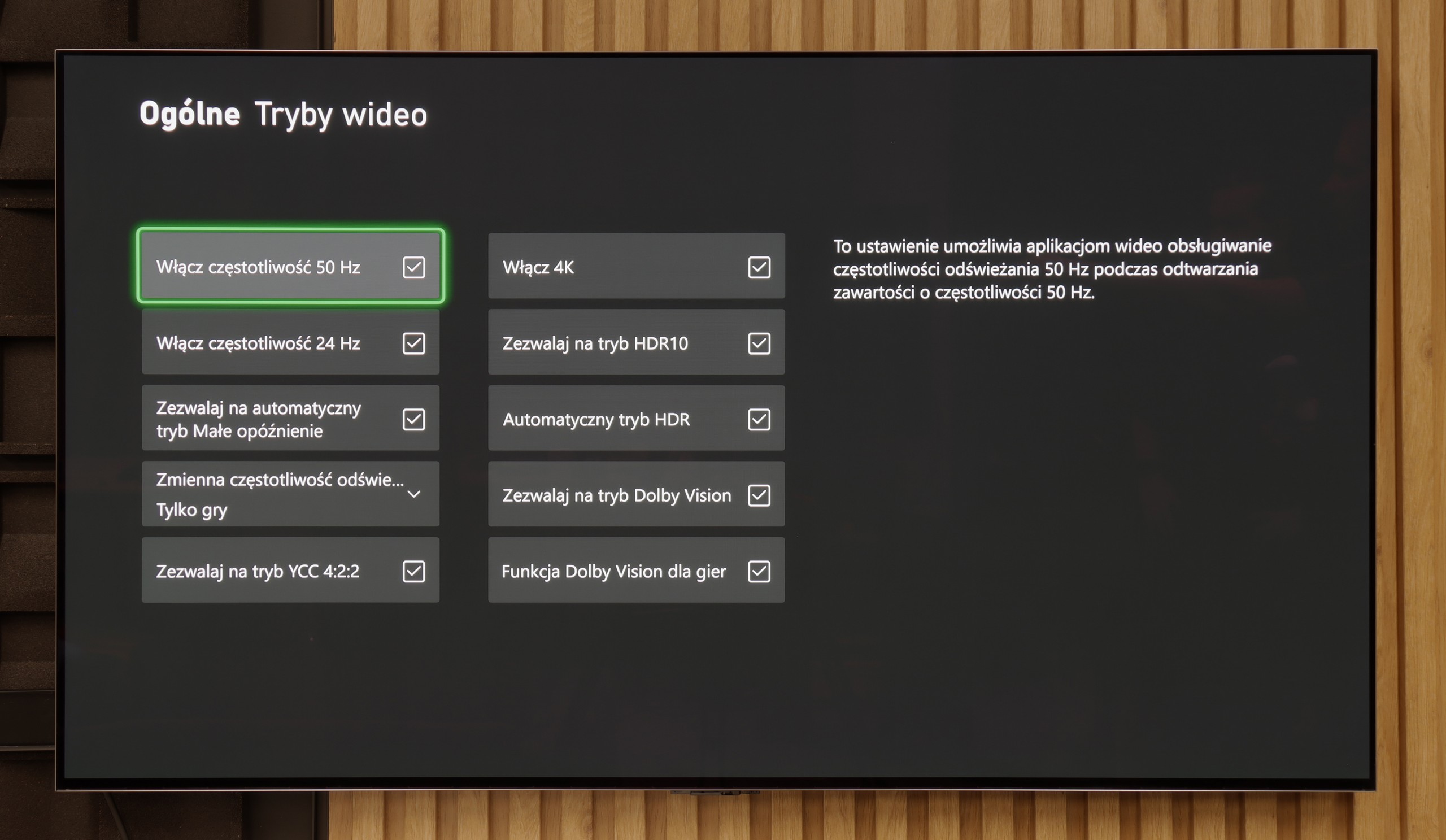

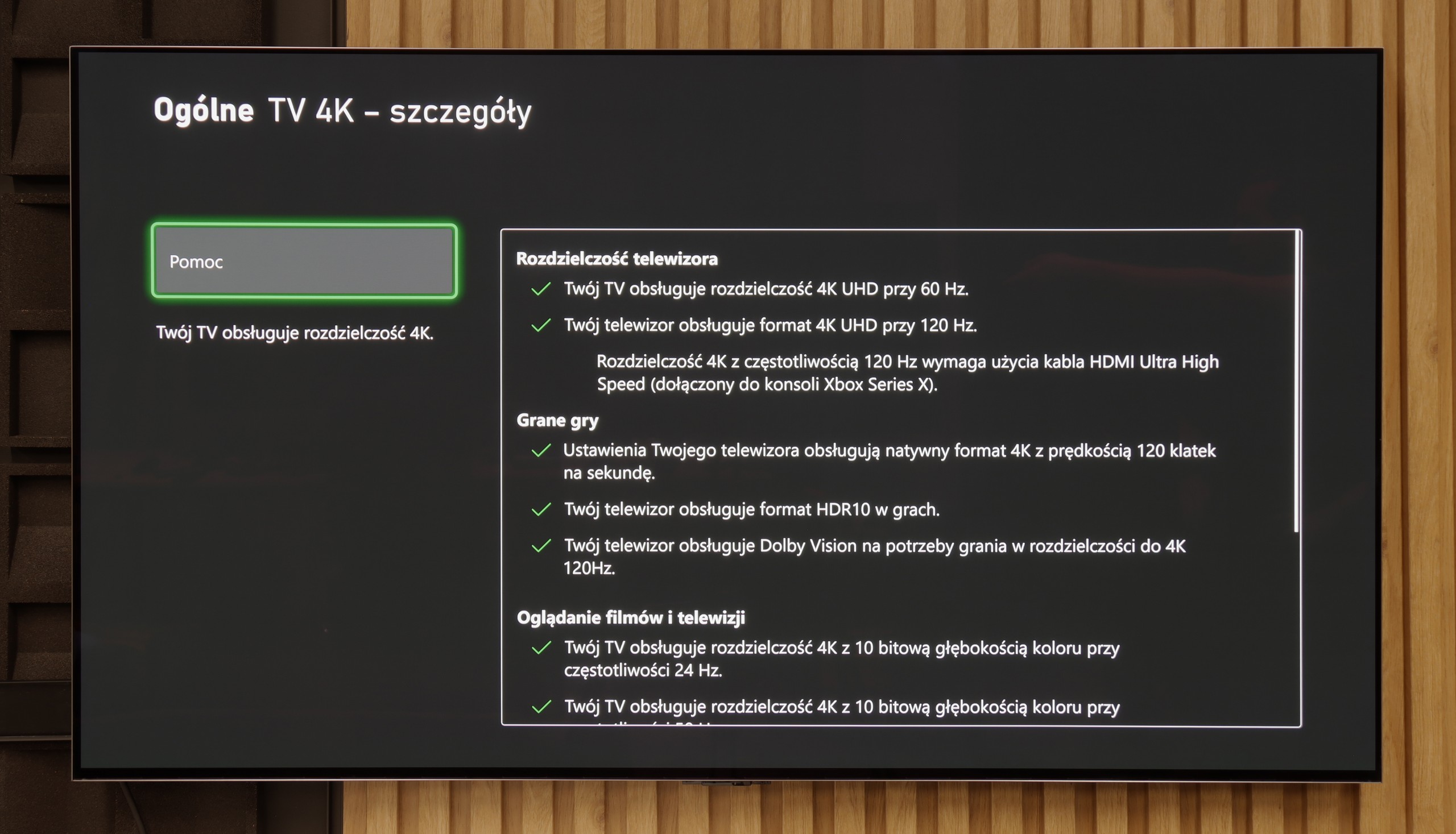

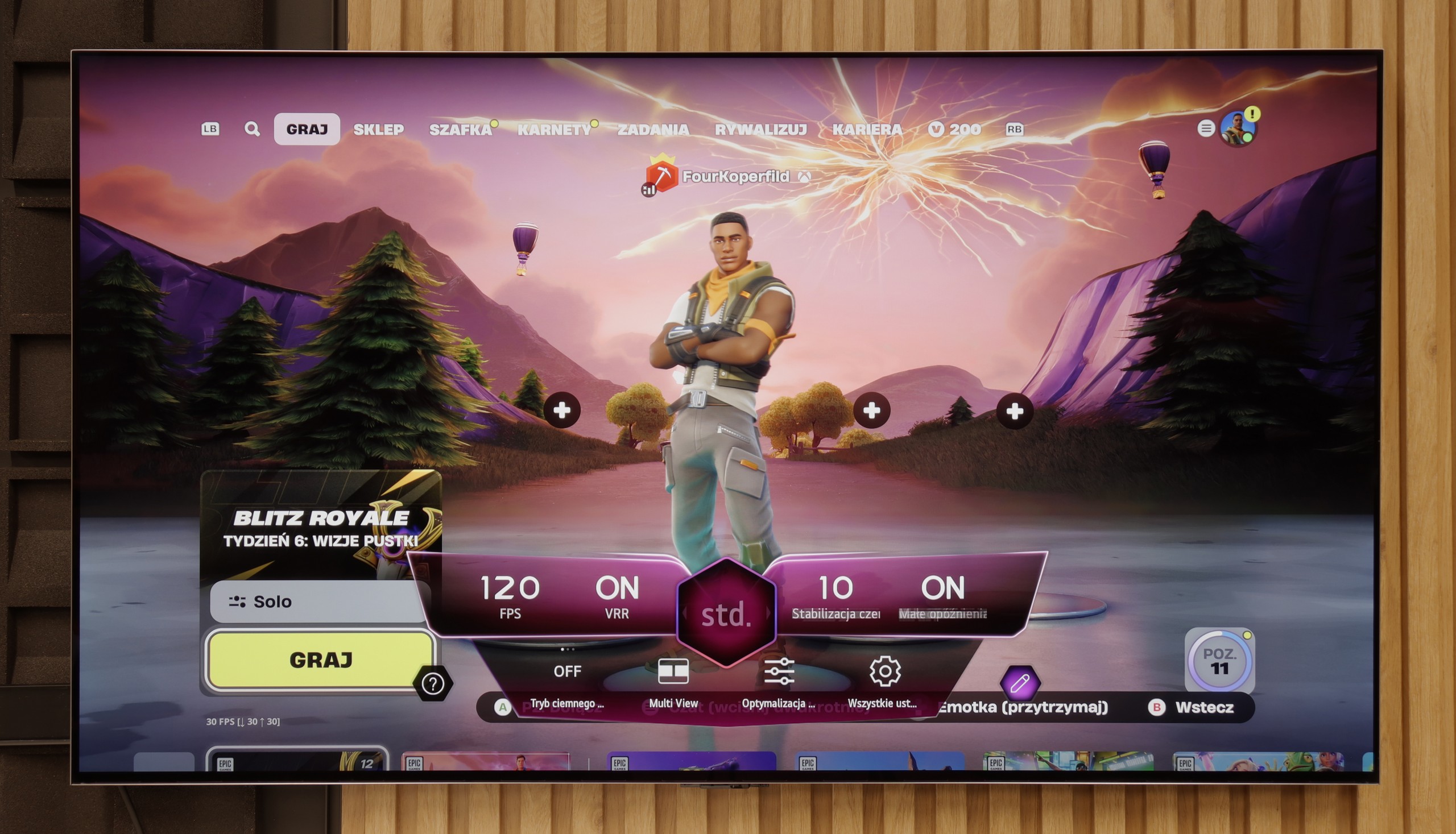

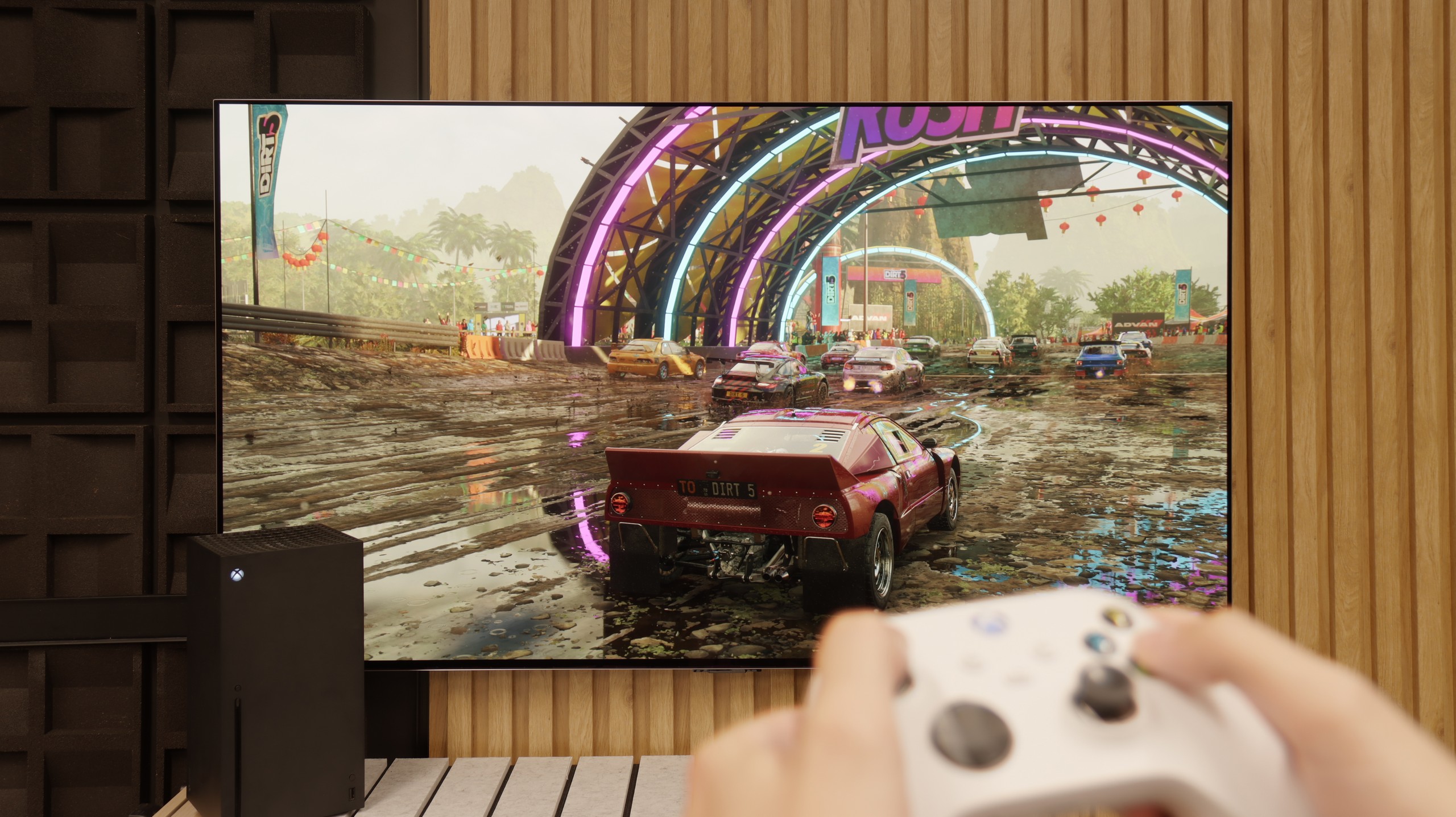

Features for gamers? Perfect. That should be enough for you to know what level we are dealing with here. G5 is a television designed with gamers in mind, so we find literally everything one can expect from a gaming screen. There is Game Bar, support for high resolutions with high refresh rates – that is, 4K at 120 Hz, and even more, because the panel has a refresh rate of 165 Hz (which PC gamers will benefit from). The television supports variable refresh rates (VRR), automatic low latency mode (ALLM), and correctly supports HDR in games thanks to HGiG. All of this adds up to one of the best sets of gaming features available on the market. Well done, LG.
The Hisense U7Q is a TV designed for gamers – and you can see that right away based on its gaming capabilities. It has practically everything you could wish for: variable refresh rate (VRR) – check, automatic game mode (ALLM) – also check, and high refresh rates of up to 240 Hz in Full HD, as well as support for various resolutions, not just 4K. It's truly a great set of features that makes the U7Q excel in both fast-paced shooters on consoles and more demanding titles on PC. Of course – like in most Hisense models – it lacks a proper implementation of the HGiG function. That's a shame because HGiG allows you to adjust the brightness of the console to the specific TV, which in practice makes displaying HDR games according to the creators' intentions much easier. Without this, you simply have to reckon with certain limitations in the final HDR image in games.
Input lag
9.9/10
9.7/10
SDR
HDR
Dolby Vision
The input lag on the LG G5 is incredibly low. The response time to our actions – whether we're playing with a controller, keyboard, or mouse – is almost perfect. The controls are instant, and the game reacts exactly when we expect it to. The Dolby Vision Gaming mode does introduce slightly higher delays, but even then it's hard to complain about anything – in the worst case, the values hover around 20 ms, which for most players will be practically unnoticeable.
Input lag on the U7Q is really impressive. With 120 Hz content, we recorded around 9 ms, and with 60 Hz – around 17 ms. These are outstanding results that make the TV perform excellently even in dynamic games that require quick reactions. There is hardly anything to criticize here. Of course, as is often the case, the Dolby Vision mode in games seems a bit slower compared to classic SDR or HDR. This will mainly be noticeable for Xbox Series X/S console users, which are the only ones that support Dolby Vision Gaming. Fortunately, input lag still remains below 30 ms, so in practice, this is still an acceptable level even for more demanding gamers.
Compatibility with PC
8.8/10
8.6/10
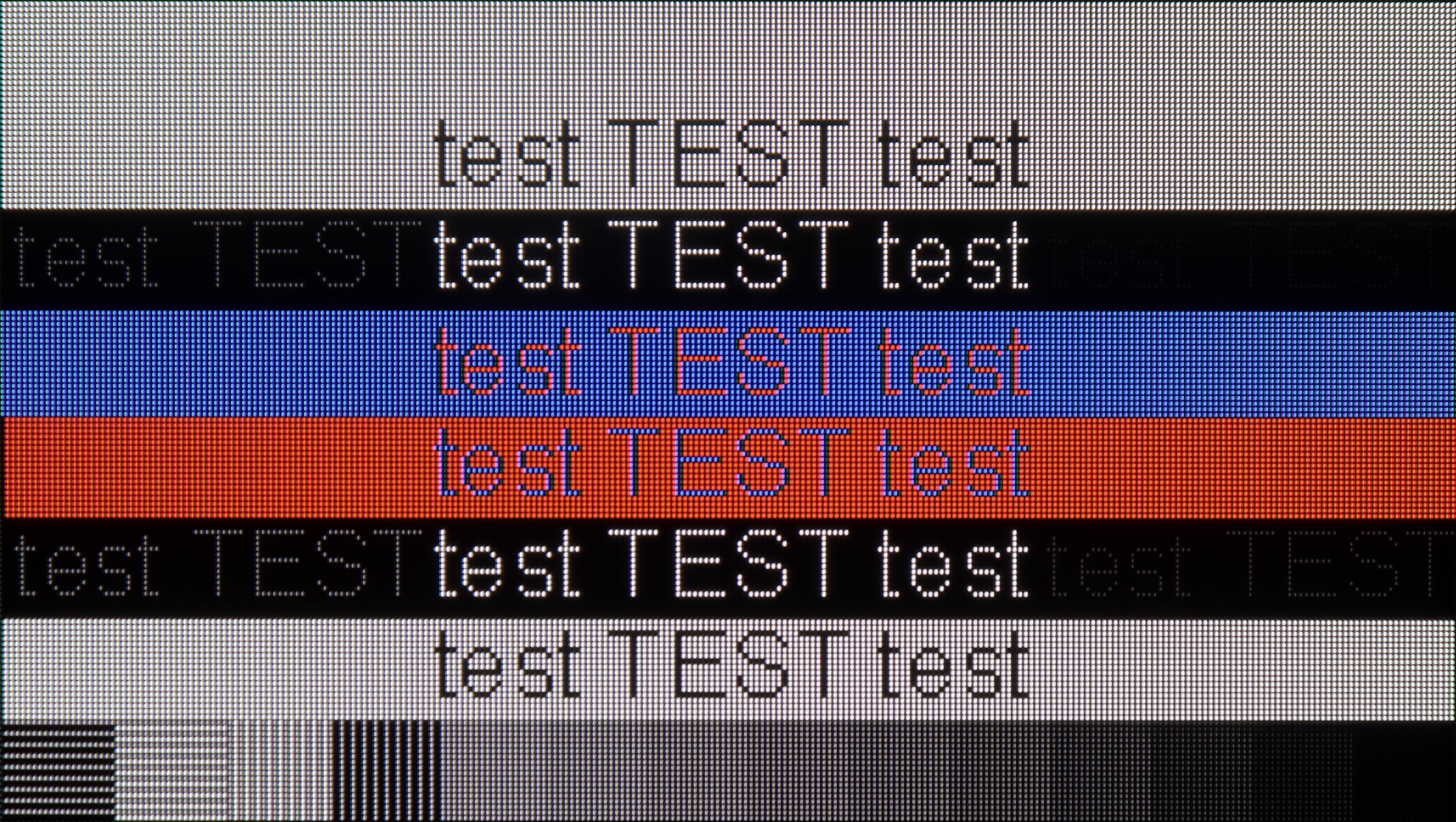

Collaboration with a PC? Almost ideal. The television, as we mentioned earlier, has great features for gamers – including those using a PC. On board, we find full G-Sync certification, a 165 Hz panel, and a super-fast input lag of around 5 ms. Thanks to the correct implementation of chroma 4:4:4, fonts are very readable – both the smallest and the largest. Although due to the WRGB subpixel layout, there may be slight shadows around the characters, for most users this effect will be virtually unnoticeable. The G5 performs excellently as a screen for work, entertainment, and gaming – also from a computer.
The U7Q communicates excellently with the computer. For gamers, this is great news – we have high refresh rates, low input lag, and G-SYNC support, so gaming from the PC is pure pleasure. But the U7Q also performs well in everyday tasks. If someone uses a computer for text, browsing the internet, or office work – there’s nothing to complain about. The television correctly handles chroma 4:4:4, so fonts look sharp and clear, without blurriness or strange contours. Both lowercase and uppercase letters are simply readable – just as they should be.
Viewing angles
7.5/10
3/10
The viewing angles on the LG G5 are very good, mainly due to the use of the WOLED matrix. It's hard to find something to complain about here – the image does not significantly lose brightness or quality even when we look at the screen from the side. However, it must be fairly noted that there is some regression compared to the G4 model. The predecessor used an MLA matrix with micro-lenses, which offered slightly better light distribution. Also, compared to QD-OLED matrices, the angles are worse. Nevertheless, the overall viewing experience at an angle remains very good and should not be an issue in everyday use.
The viewing angles on the U7Q are rather weak – this is simply a typical characteristic of VA panels. Straight on, everything looks very good: blacks are deep, colors are saturated, and the contrast is high. But just shifting slightly to the side causes the image to start losing quality – colors become washed out, and blacks begin to resemble dark gray. Compared to TVs with IPS panels, the U7Q performs worse, although on the other hand, it makes up for it with better contrast and deeper blacks.
TV efficiency during daytime
8/10
6.2/10
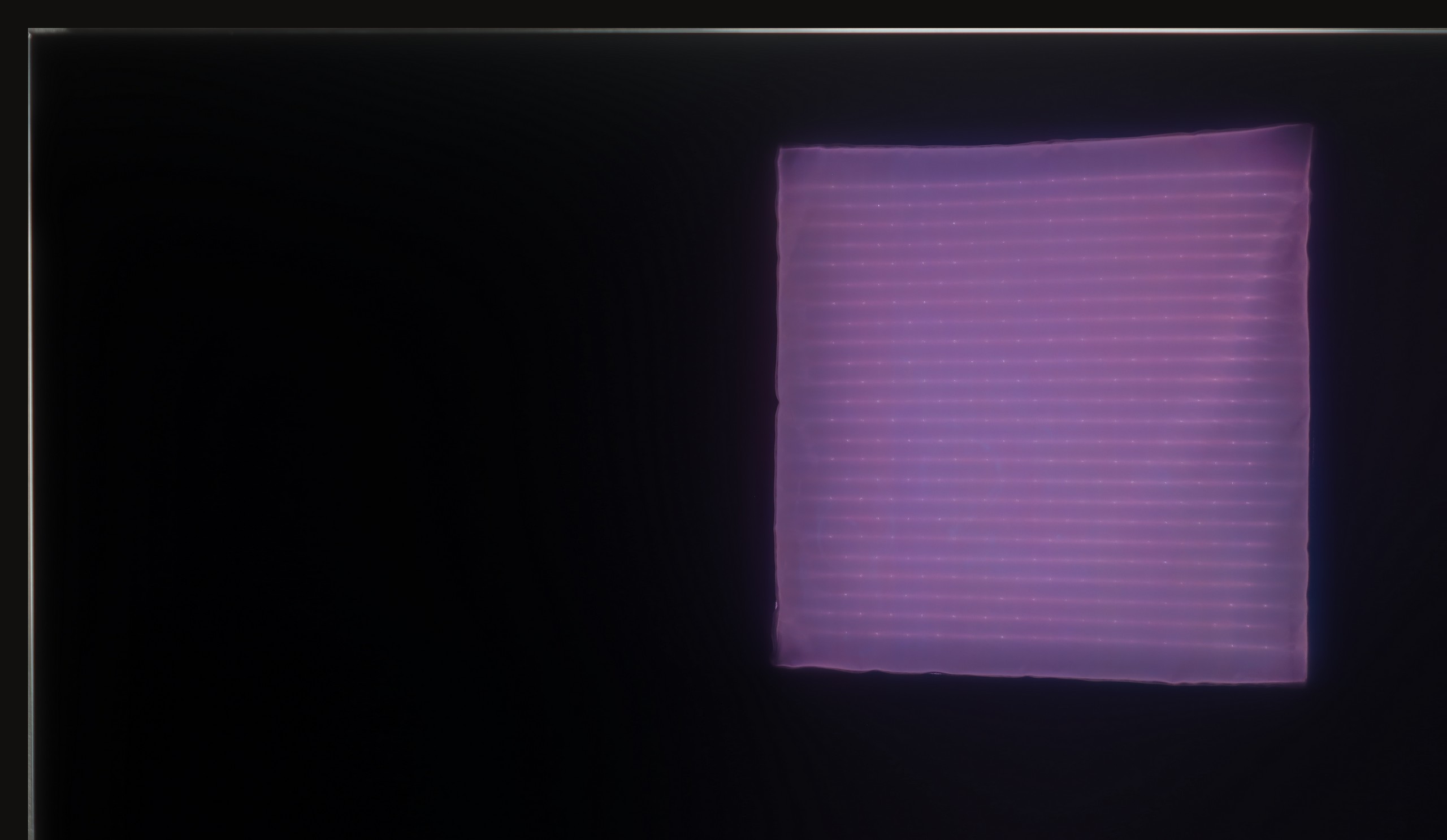



Matrix brightness
Average luminance SDR
Hisense U7Q: 519 cd/m2
LG OLED G5: 810 cd/m2
The LG G5, thanks to its very high brightness, performs excellently in bright rooms. Even with SDR content, the average brightness value is around 800 nits, which is significantly more than in standard televisions. It can easily handle a bright living room. Although the panel averages out reflections, it still maintains significantly better black levels and colors during the day than QD-OLED panels or matte-coated screens. The G5 will perform well in very sunny rooms—unless you really can't stand reflections on the screen. In that case, you will need to use blackout shades or consider buying a television with a matte screen.
The U7Q performs quite well in a sunlit room. The brightness in SDR mode averages around 520 nits, which in practice means that even on sunny days, it's comfortable to watch television—without the feeling that everything is drowning in our reflections. Additionally, thanks to the satin coating on the panel, the television does a good job of reducing reflections.
Details about the matrix
Subpixel Structure:

Panel uniformity and thermal imaging:


TV features
8.5/10
8.9/10
- HDMI inputs0 x HDMI 2.0, 4 x HDMI 2.1 48Gbps2 x HDMI 2.0, 2 x HDMI 2.1 48Gbps
- Other inputsIR (remote)RCA (Chinch)
- OutputsToslink (Optical audio), eARC (HDMI), ARC (HDMI)Toslink (Optical audio), eARC (HDMI), ARC (HDMI), Mini-Jack (Headphones)
- Network InterfacesWi-Fi 2.4GHz, Wi-Fi 5GHz, Ethernet (LAN) 100MbpsWi-Fi 2.4GHz, Wi-Fi 5GHz, Ethernet (LAN) 100Mbps
- TV receptionDVB-T, DVB-T2, DVB-S, DVB-S2, DVB-CDVB-T, DVB-T2, DVB-S, DVB-S2
Classic features:
- Recording to USB (terrestrial TV)
- Recording programming
- Picture in Picture (PiP)
- RF remote control (no need to aim at the screen)
- Backlit remote control
- Teletext
- Audio only mode
- Possibility to connect Bluetooth headphones to the TV
- Possibility to simultaneously use Bluetooth headphones and the TV speaker
Smart features:
- AirPlay
- Screen mirroring (Windows Miracast)
- Wyszukiwanie głosowe
- Voice search in native language
- Ability to connect a keyboard and mouse
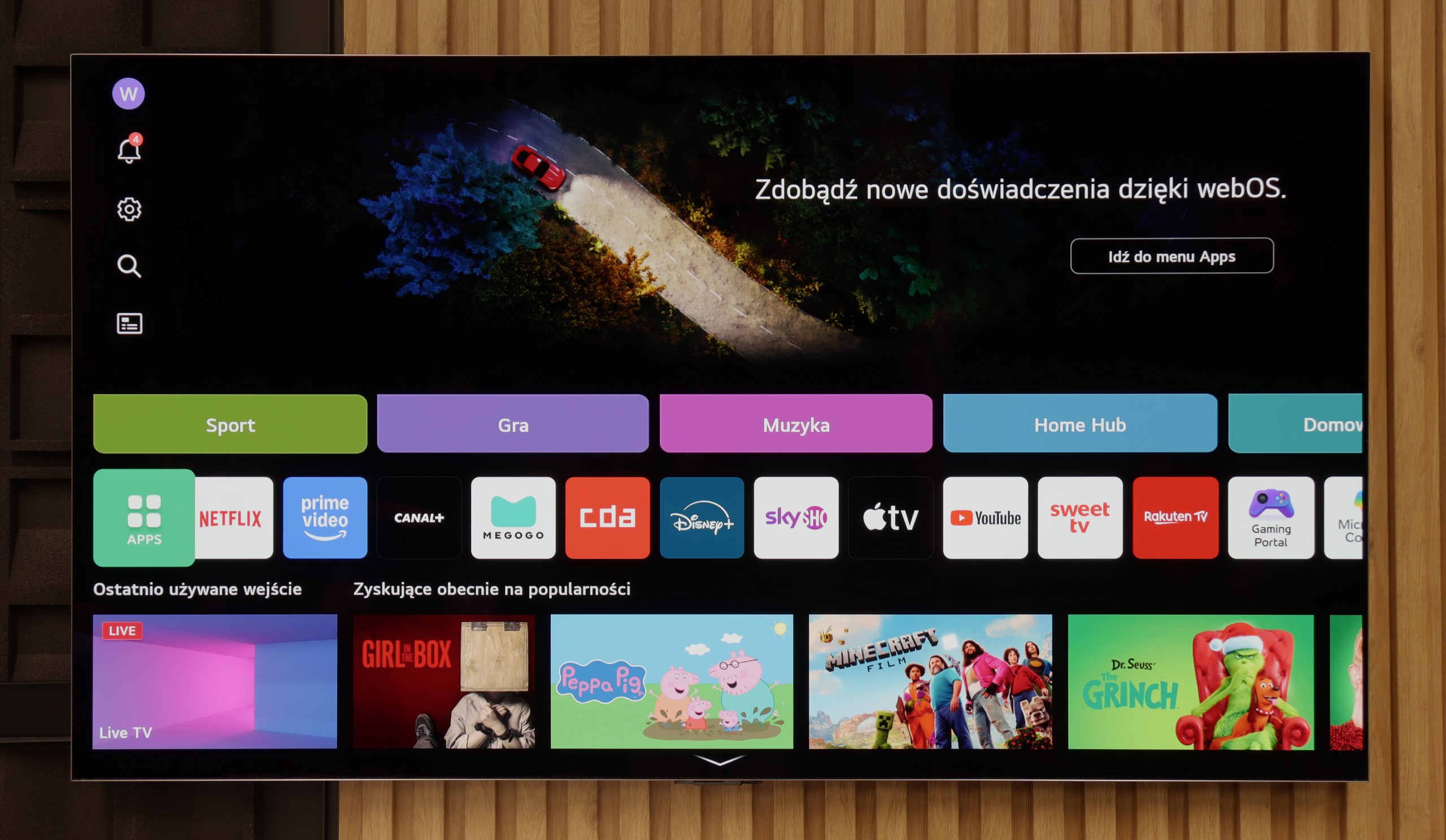
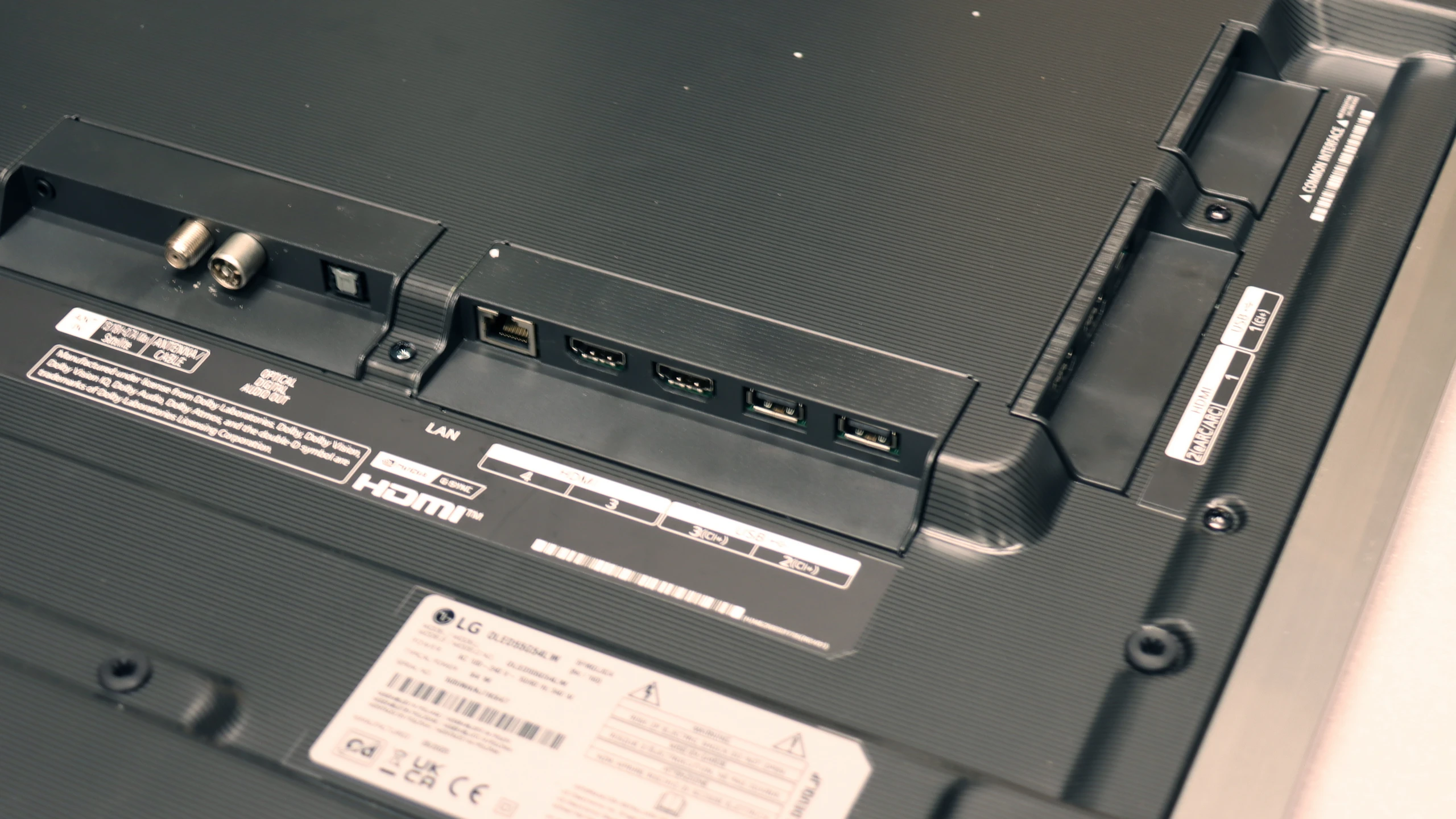
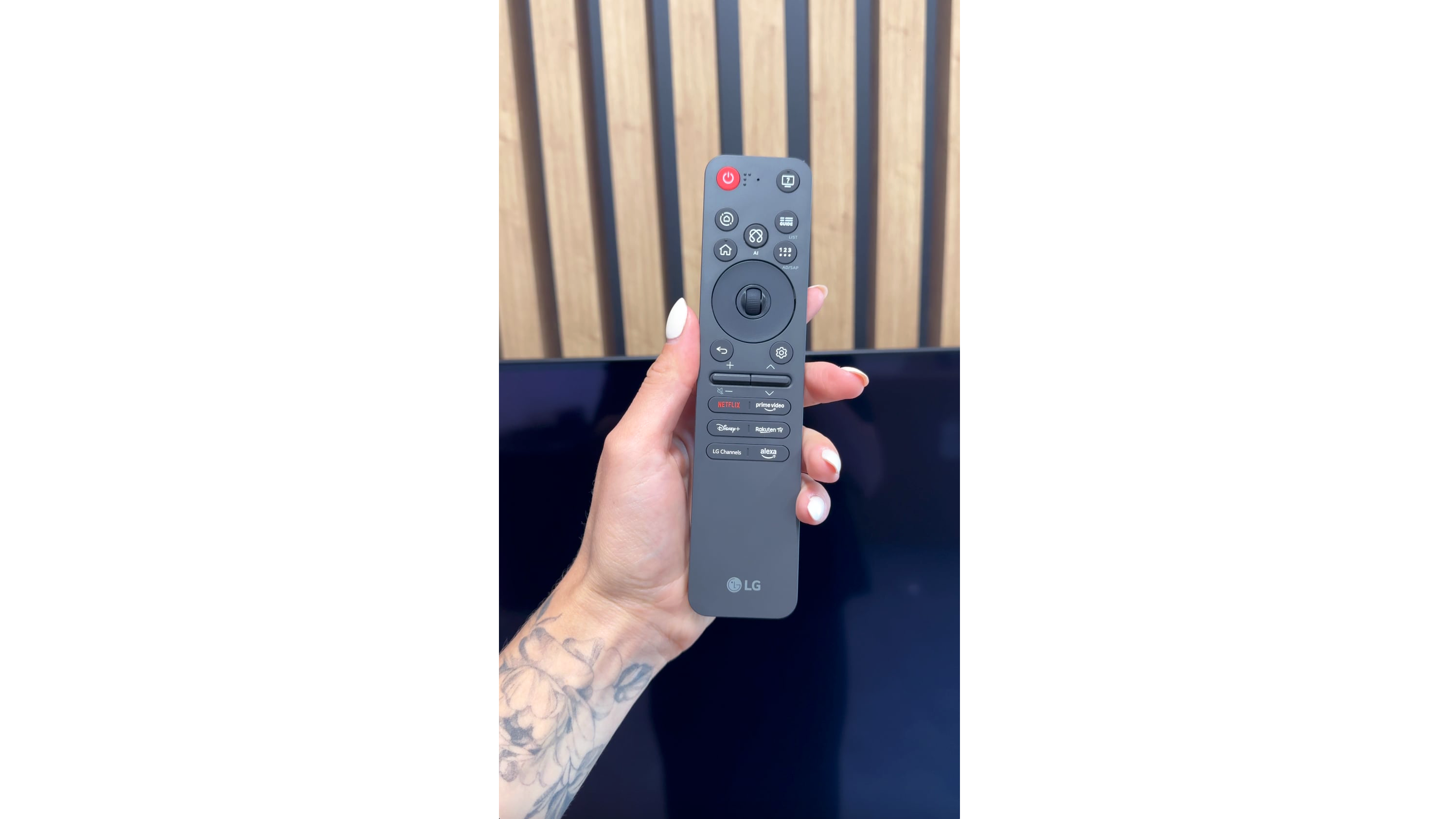
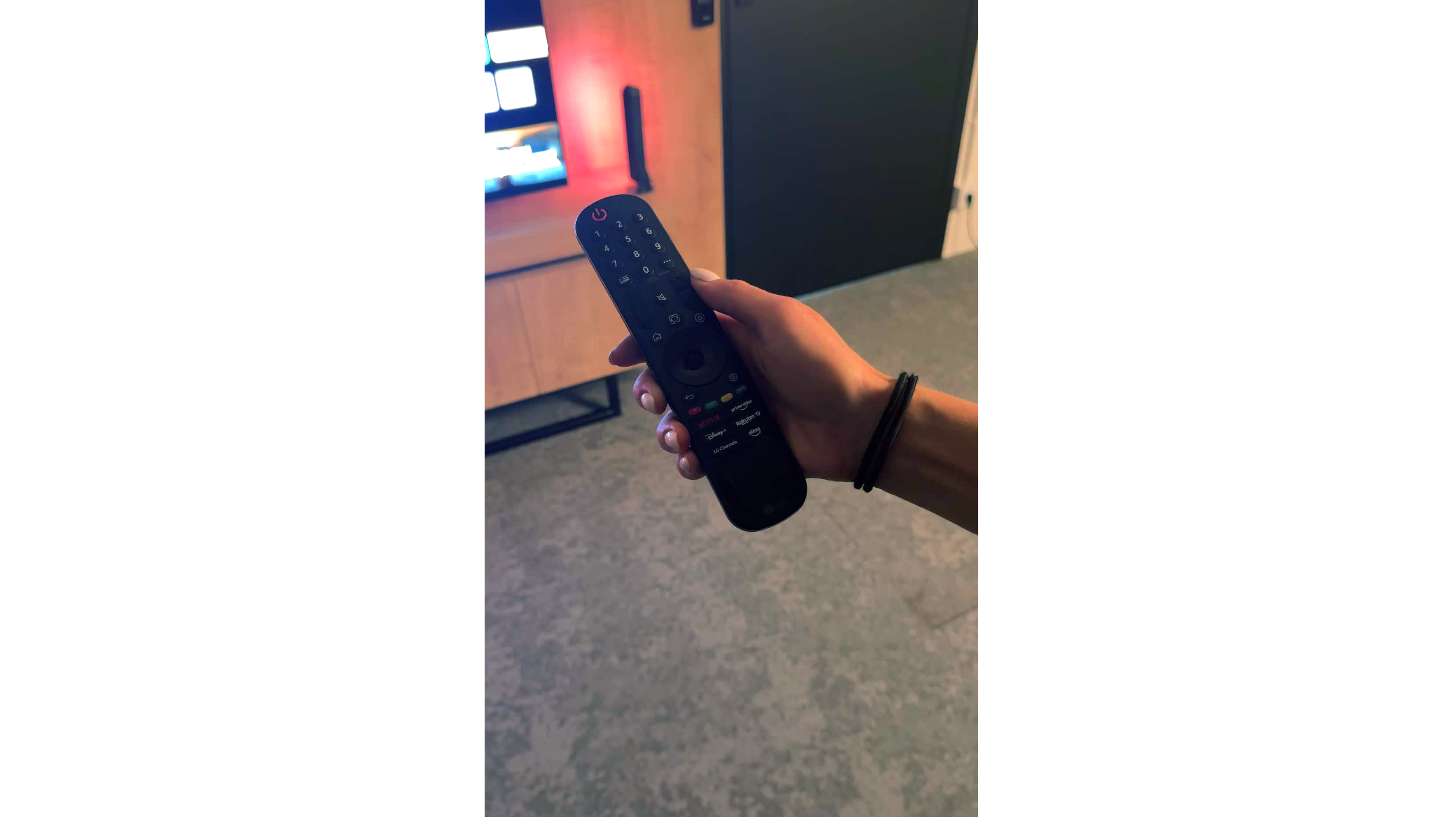




Classic Features
LG G5 has a lot to offer when it comes to classic TV features. Aside from the lack of the ability to watch two sources (PIP), the television performs well for everyday use. There are no issues with connecting external Bluetooth devices, such as headphones, and the EPG interface is very clear and understandable – even for those who are not particularly tech-savvy.
Smart TV Features
The Smart TV in the G5 operates on the WebOS system – it is the heart and brain of the entire television. Thanks to the Magic remote, using the G5 is truly enjoyable. We control the cursor on the screen with wrist movements, which is somewhat reminiscent of using a mouse in the air. The system itself is very comprehensive and offers everything one could expect: AirPlay, screen mirroring, voice search, and voice commands – all of these work smoothly and without delays. Without a doubt, this is one of the best operating systems in televisions on the market.
Note:
During our testing, we had practically nothing to complain about – except for one exception: the confusion surrounding the remote. Depending on the market and the specific version of the model, you may come across the new, minimalist Magic remote (without a numeric keypad), or the older version with a full set of buttons. We tested the G54LW model, which had the new Magic remote, but it is hard to say how the situation looks in other variants. Perhaps it is a similar situation to the LG C5 series, where the addition of the remote also depends on the specific market.
Classic Features of U7Q
Hisense U7Q has a lot to offer when it comes to classic TV features. You can record programs to USB, easily connect external devices via Bluetooth, and the interface – such as EPG – is clear and readable. It may sound like something mainly appreciated by seniors, but the truth is that the U7Q has practically everything needed for watching traditional television. The only thing missing here is the PiP (picture-in-picture) feature.
Smart TV U7Q: Vidaa
When it comes to Smart features, the U7Q runs on the proprietary VIDAA system. And I must admit – it works really smoothly. Voice search in Polish? No issues. AirPlay and screen mirroring? They work without any problems as well. Of course, one must be aware that VIDAA is a closed system, so – as is often the case – some popular apps, especially those related to music, are missing. Therefore, before purchasing, it’s worth checking if all the apps you use daily are available.
Playing files from USB
9/10
8.2/10
Supported photo formats:
Maximum photo resolution:
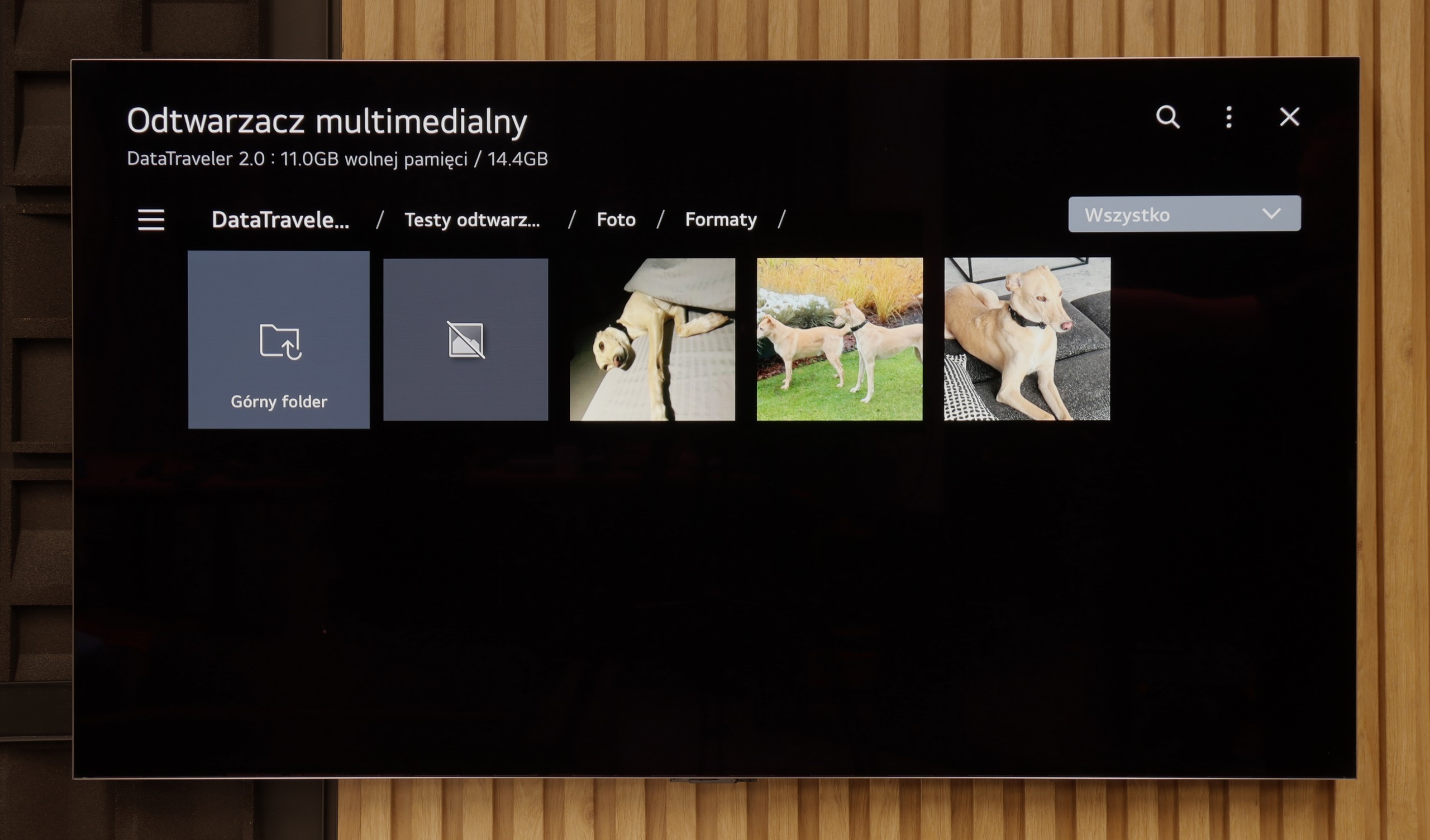

The built-in media player in the LG G5 is really very good. It supports virtually everything you would expect from a modern television – most popular formats work without issue, and the application performs quickly. Our only disappointment was the lack of support for very high bitrate HEVC files at 85 Mbit/s – similar to the C5 and B5 models. Interestingly, the same file worked flawlessly on last year's LG OLEDs, so it's hard to say what is behind this change. Nevertheless, in everyday use, the G5 will handle the vast majority of content, and there will be no need to connect any external devices for media playback.
The built-in player in the U7Q fully meets the needs of most future users. The television seamlessly supports Polish characters and most popular video, audio, and photo formats. If we had to nitpick, it would be only about the limited support for certain photo resolutions – there are occasions when files from the camera are not displayed correctly. It's worth keeping this in mind if you plan to present photos directly from a DSLR or phone.
Apps
9.1/10
7.7/10














































Sound
8.7/10
7.2/10
- Maximum volume-82dB
- Dolby Digital Plus 7.1
- Dolby True HD 7.1
- Dolby Atmos in Dolby Digital Plus (JOC)
- Dolby Atmos in Dolby True HD
- DTS:X in DTS-HD MA
- DTS-HD Master Audio
The sound on the LG G5, given its slim body, is truly phenomenal. When listening to music, a light, pleasant bass can be felt, and in movies, the dialogues are clear and easily heard – they do not get lost even in dynamic scenes. Unfortunately, a certain disappointment is the lack of support for the DTS format, which LG used in its older models. It's a shame, because many people with home theaters may see this as a step backward.
Sound is one of the major advantages of the U7Q. The TV sounds really pleasant – there is a slightly noticeable bass, good tone balance, and it is definitely something more than just for "everyday news watching." You can easily play music on it and just enjoy the sound – of course in an entertaining way, not an audiophile one 😉. It also deserves high praise for full support for the most important audio codecs, which worked flawlessly. A small exception is Dolby Atmos in TrueHD version, which did not fully play when connected to a home theater, so if someone uses this format – it's worth keeping in mind – it may be a software bug.
Acoustic Measurements
No acoustic data
82dBC (Max)
75dBC


